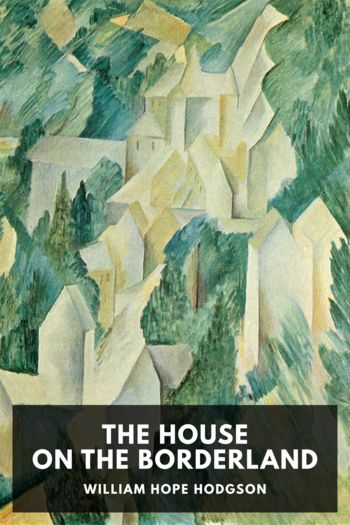Gluck by Diana Souhami (most interesting books to read .TXT) 📗

- Author: Diana Souhami
Book online «Gluck by Diana Souhami (most interesting books to read .TXT) 📗». Author Diana Souhami
She did several self-portraits, all of them mannish. There was a jaunty and defiant one in beret and braces – stolen in 1981 – and another, now in the National Portrait Gallery, which shows her as arrogant and disdainful. She painted it when suffering acutely from the tribulations of love. A couple of others she destroyed when depressed about her life.
She dressed as she did not simply to make her sexual orientation public, though that of course she achieved. By her appearance she set herself apart from society, alone with what she called the ‘ghost’ of her artistic ambition. And at a stroke she distanced herself from her family’s expectations, which were that she should be educated and cultured but pledged to hearth and home. They would have liked her to marry well, which meant a man from a similar Jewish background to hers – preferably one of her cousins – and to live, as wife and mother, a normal, happy life. By her ‘outré clobber’ Gluck said ‘no’ to all that, for who in his right mind would court a woman in a man’s suit? Her rebelliousness cut her father to the quick and he thought it a pose. But however provocative her behaviour there was no way he would cease to provide for her, his concept of family loyalty and obligation was too strong.
Courtesy of her private income, she lived in style with staff – a housekeeper, cook and maids – to look after her. She always kept a studio in Cornwall. In the 1920s and 30s she lived in Bolton House, a large Georgian house in Hampstead village. After the war she settled in Sussex in the Chantry House, Steyning, with Edith Shackleton Heald, journalist, essayist and lover of the poet W. B. Yeats in his twilight years. Both residences had elegantly designed detached studios.
In her painting, as in her name, appearance and manner of life, Gluck was unique. She was scornful of art school teaching and of trends and fashions in art, but appreciative of all talent she thought true. ‘I cannot’ she wrote, ‘imagine enjoying life at all unless one’s responses were catholic, embracing the first primitives of all races to the latest genuinely spiritually motivated creation.’2 She resolved early on to show her work only in solo exhibitions, for she felt unallied to any movement, group or school. ‘It used to annoy me when I was younger to be told continually how “original” I was. What is there so original in just being oneself and speaking one’s mind?’3
The ‘heart’ of her paintings is an intense and private response to her subject. Though they seem like straightforward versions of reality they have a strong inward meaning. In what she called her Credo she referred to the true artist as
… a conduit open to any unexpected experience, a lightning conductor.… The Vision dictates everything in the flash of reception. The entire composition is received as a whole in scale and in content.… The Vision once received remains a tyrant. The process of distillation is arduous, the temptations numerous and the discipline needed sometimes hard to endure …4
Gluck held five exhibitions of her work: in 1924, 1926, 1932, 1937 and then, after a gap of thirty-six years, in 1973. All of them were met with excitement and praise. ‘The private view to see the “Diverse Paintings” by Gluck’, wrote The Star Man’s Diary, 3 November 1932, in a review typical of all she received:
attracted a crowd of celebrities all day. One need not be surprised, for Gluck, as this Eton-cropped artist, who is a delightful law unto herself, insists on being called, is a remarkable genius and her pictures and their setting are arresting in the extreme.
Queen Mary, Lady Mount Temple – stepmother to Edwina, who married Lord Mountbatten, Sir Francis Oppenheimer the owner of South African diamond mines, Cecil Beaton, Syrie Maugham and the theatre impresario C. B. Cochran were among the famous and rich who called at ‘The Gluck Room’ of The Fine Art Society to see her paintings and acquire them for their walls.
At the time of the Second World War and at the height of her career she faded from sight. A conflation of troubles, the acutest of which was disappointment in love, made her wilt as a person and painter. But though buried she was not dead. When nearing eighty she unearthed herself and held a final exhibition which generated as much buzz and enthusiasm as when she had been young. ‘What is the link?’ she asked in a letter to The Fine Art Society (14 August 1976) two years before she died. ‘By what content would one recognise a picture was mine? I, of course, am the last person to be able to answer such a question. So? It will be too late for me when posterity decides.’
Gluck regarded herself as an essentially British painter and chose subjects intrinsic to her life: bleached, spare, light-filled landscapes done when she was in Cornwall, formal flower groups when with Constance Spry, genre pieces of events of the day, portraits of her family, friends and lovers and of the elegant society women with whom she socialized. She used the visual vocabulary of the decades through which she lived in an unselfconscious and personal way: like the





Comments (0)